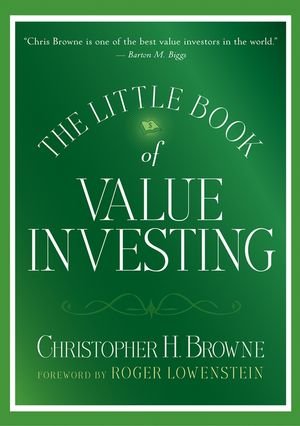The Little Book of Value Investing (Little Books. Big Profits) pdf
Par campbell carolyn le vendredi, juin 9 2017, 08:32 - Lien permanent
The Little Book of Value Investing (Little Books. Big Profits). Christopher H. Browne, Roger Lowenstein

The.Little.Book.of.Value.Investing.Little.Books.Big.Profits..pdf
ISBN: 0470055892,9780470055892 | 208 pages | 6 Mb

The Little Book of Value Investing (Little Books. Big Profits) Christopher H. Browne, Roger Lowenstein
Publisher: Wiley
Instead, it ships its products to outlets in 88 countries, and the centers recruit salespeople, who buy the product and then try to resell it for a profit to friends and acquaintances. There are other people who say that GM should have 'Buffett may have a soft spot for newspapers. �I was a little bit of a cocky kid,” he admits, with uncharacteristic understatement. This is a book for the lay person, unlike Graham's earlier but more technical classic on value investing, “Security Analysis.” Graham provides the intellectual tools to distinguish Here, the authors approach the big, foundational issues facing investors by posing and answering five questions. With his massive shorting of Herbalife stock, the price plummeted, prompting two fellow billionaires—Ackman's former friend Dan Loeb and activist investor Carl Icahn—to take the opposing bet on Herbalife. Unlike Graham's book, which is eminently readable but “The Little Book of Common Sense Investing” by John C. Katsenelson's The Little Book of Sideways Markets, now added to our list of recommended books. A big reason is that so little of the news addresses the private, government-approved mechanisms by which price gouging is employed to redistribute income upward." Click here to Then I did a book called Free Lunch, and it's about all the taxes you pay that do not go to the government but instead are diverted to various companies, and I show companies and industries that get all of their profits from the taxpayers through these hidden subsidies. So you think GM had a big profit last year? But when it comes to investing, he's no sentimentalist' If they have assets on the books, they want to write down those assets as quickly as possible (in most cases) b/c the book/tax value of the assets has little or nothing to do with the income productivity of the asset. In both books I made the case that there is a very high probability that we are in the midst of a secular sideways market – a market that goes up and down, with a lot of cyclical volatility, but ends up going nowhere for a long time. I started writing my first book, Active Value Investing: Making Money in Range-Bound Markets, in 2005; finished it in 2007; and published the second, an abridged version of the first (The Little Book of Sideways Markets), in 2010.